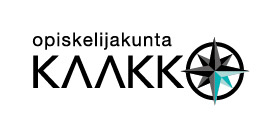In 2021, the Student Equality Survey was carried out for a fourth time at Xamk among bachelor’s and master’s degree programme students. The survey was primarily targeted at students who had completed approximately 50% of their studies, and students were allowed to submit their responses in Finnish or in English. Compared to 2020, there was a significant rise in the number of respondents, from 443 to 548 students.
Of these, female and male respondents accounted for 58.4% and 38.9%, respectively, while 2.7% of the respondents identified themselves as nonbinary or did not identify their gender at all. The share of male respondents slightly fell in comparison to the previous two years. A noteworthy increase of 9 percentage points was detected in the share of respondents pursuing their degree by means of virtual studies.
Equality
Students were requested to assess equality at their institution of higher education by responding to statements on a scale of 1–5 (1=Fully disagree, 2=Partly disagree, 3=Don’t disagree nor agree, 4=Partly agree, 5=Fully agree) or choosing the alternative “I cannot say”. Most of the respondents fully agreed with the statements, and the average scores are presented below. The last year’s average scores are stated in brackets.
- Women and men are treated equally at my university of applied sciences 4.8 (4.7)
- Course assessment is equal for women and men 4.8 (4.7)
- There are no differences as to what is expected of women and what is expected of men 4.6 (4.6)
Equality between men and women was also assessed from the perspective of opportunities. In comparison to 2020, the most remarkable change was the significant increase in the number of I-cannot-say responses. This may be due to the greater share of respondents pursuing their degree by means of virtual studies.
The greatest variation was noted in statements relating to the appreciation of students with 2.2% of the respondents stating that they believed women had better opportunities than men and 3.7% stating that they believed men had better opportunities than women. However, the share of both these responses came down from 2020.
Every statement referring to the appreciation of students showed a decrease of 3–8 percentage points in the selection of alternative “Women and men have equal opportunities”. Since the share of the alternative indicating inequality also fell for most of the statements, the change is mostly explained by the increased number of I-cannot-say responses (15–20% of the respondents compared to 9–15% in 2020.)
Non-discrimination
In total, 26 respondents (4.7%) stated that they had encountered inequality or discrimination at their institution of higher education. When this is compared to the 30 respondents (6.8%) in 2020 and 31 respondents (8.1%) in 2019, it can be seen that even if the total number of respondents in the survey has risen, the number of students who encounter inequality or discrimination is steadily going down.
Mostly, the instances of unequal treatment or discrimination were associated with course-related assignments (13 responses), group assignments (8) and grades (7). In this respect, there was no significant difference compared to the previous year.
Personal characteristics (8 responses) and opinions (8 responses) were the most commonly stated reasons underlying unequal treatment or discrimination. The most significant change compared to 2020 was that the number of respondents stating gender as the reason underlying unequal treatment or discrimination came down from 11 to 5. The respondents were allowed to state more than one reason.
Harassment or inappropriate conduct
In total, 18 respondents (3.3%) stated that they had experienced harassment or inappropriate conduct, either at their institution of higher education or while completing practical training. In 2020, the figure was 20 (4,5%.)
The source of harassment or inappropriate conduct was either another student (6 responses), teacher (6) or someone at the place of practical training (6). Compared to the previous year, there was a significant decrease in the number of harassment or inappropriate conduct incidents caused by another student, down from 12.
Most often, the ways in which respondents had been subjected to harassment comprised hearing someone speak in an offensively suggestive or lewd manner, hearing uncomfortable comments on one’s body or sexuality or encountering some other form of inappropriate conduct. This was further specified as belittling or disparaging, public humiliation, intimidation, trivialisation of women, patronising and unprofessional conduct.
Harassment Advisers provide support for students
No matter how low the number of students who feel they have been subjected to harassment or inappropriate conduct, every single incident must be taken seriously. We strongly encourage all students who have experienced or witnessed harassment or inappropriate conduct to immediately contact the Harassment Advisers of Student Union Kaakko (https://www.opiskelijakuntakaakko.fi/en/harassment-contact-persons/). Furthermore, incidents of inappropriate behaviour can be reported via Incy reporting system (link available at https://ksamk.sharepoint.com/sites/Lux/SitePages/Incy-tutuksi.aspx), also anonymously.
Harassment Advisers can be contacted online or face-to-face on every Xamk campus. The Advisers will hear each incident case without judgement and take action upon request. The Advisers will not proceed without the consent of the student who reported the incident, and the process is fully confidential.
More information:
Jenni Aikio, Secretary General of Student Union Kaakko


